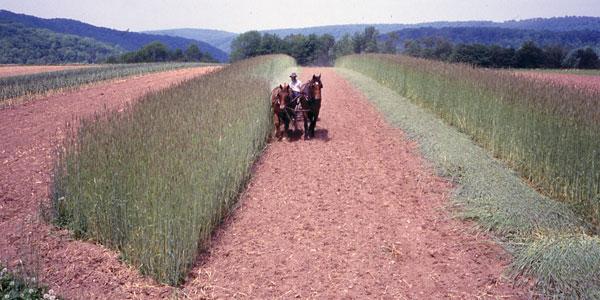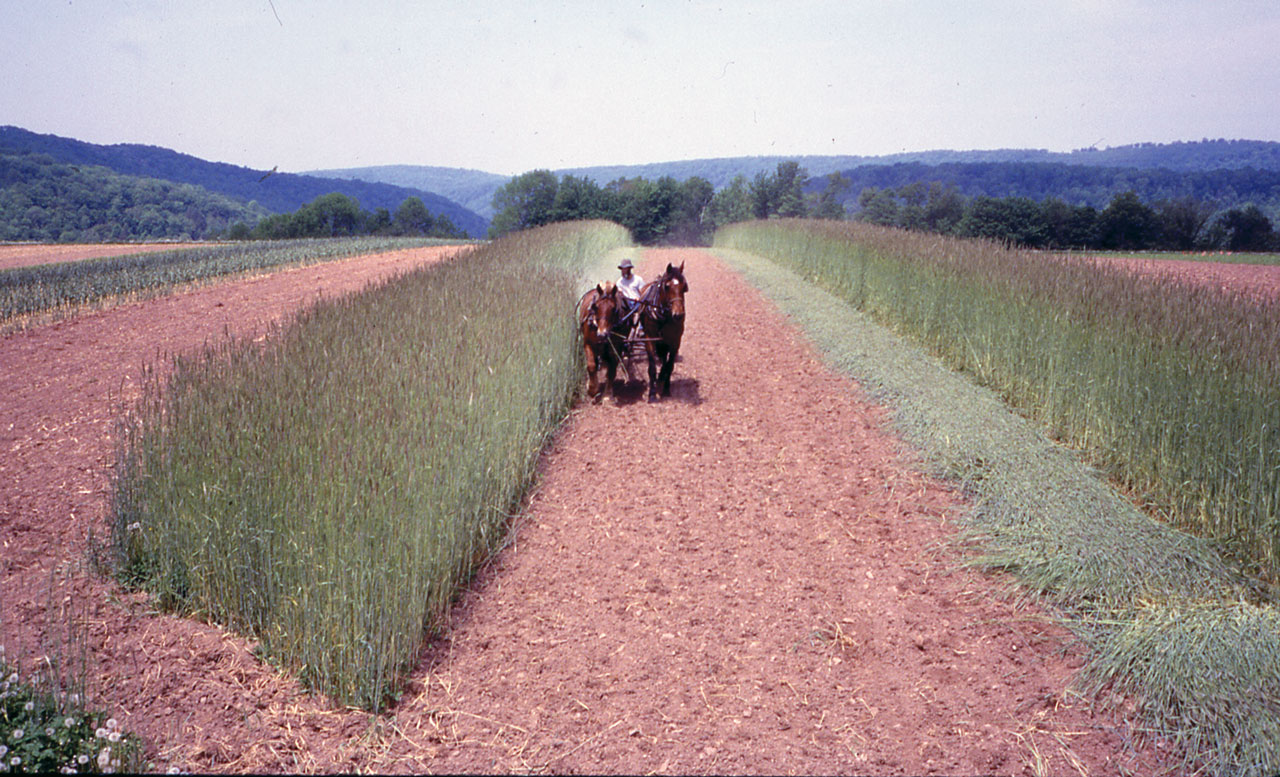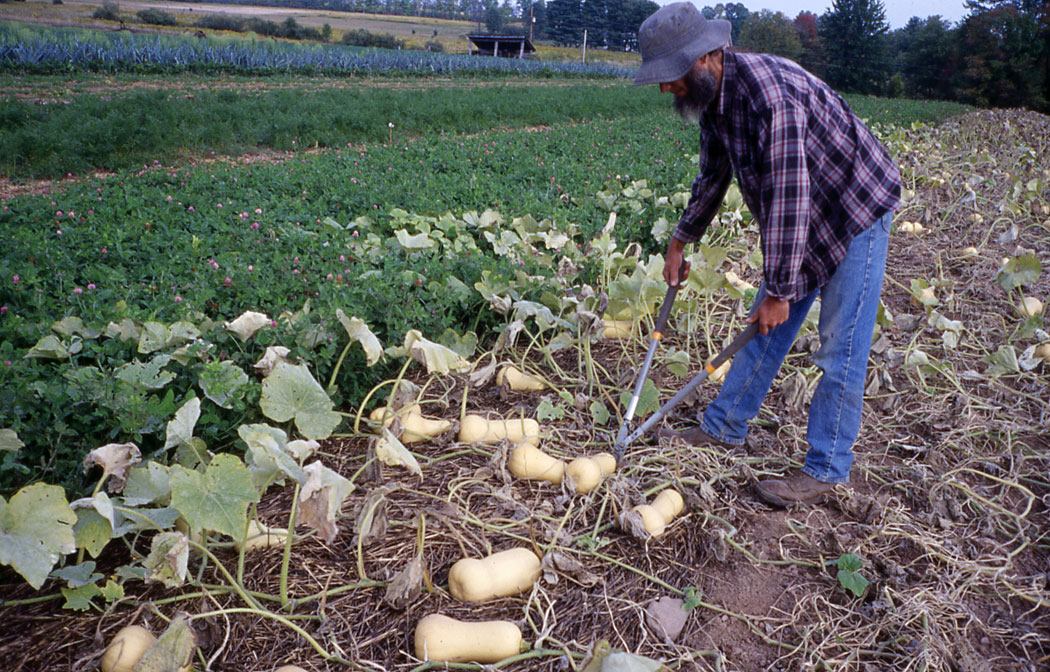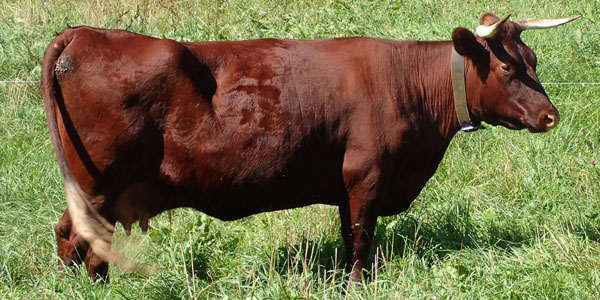
Cultivating Questions: Grow-Your-Own Mulch Part 2
Cultivating Questions Concerning the Bio-Extensive Market Garden
by Anne and Eric Nordell of Trout Run, PA
GROW-YOUR-OWN MULCH – Part 2

In the Summer 2008 SFJ we reported on our initial experiment using the fallow field cover crops to generate enough mulch materials for a 380’ row of un-irrigated winter squash. Encouraged by the excellent crop growth and yield despite the dry, hot conditions of 2007, we repeated the experiment the following years, trying to determine the optimum ratio of land in straw producing cover crops to cash crop area. In 2009, we finally got it right: we seeded a 36’ wide strip of rye and medium red clover in September of 2008, then, in April, 2009, we skim plowed a 12’ wide area in the middle of the overwintering cover crops for planting the winter squash. In the photo above, we are mowing the 5-6’ tall rye at peak pollen drop on May 24, a couple of days before direct seeding the delicate, butternut and kubocha squash and rolling out the floating row cover.

Due to a prolonged rainy spell, we were not able to rake the rye straw next to the squash for a couple of weeks. It only took three rounds with the side delivery hay rake, and ten minutes tidying up the windrow by hand with a hay fork, to put the thick mulch in place. The 2:1 ratio of cover crop to squash area met our objective of growing our own mulch with a minimum of land and labor.

The summer of 2009 was so cool and wet that the rye mulch was totally unnecessary for preserving soil moisture. However, it did a wonderful job of protecting the soil. So did the red clover, which really took off after raking the rye straw, as well as the floating row cover, which we removed to allow for pollination a few days after this July 12 photo.

One unexpected benefit of the homegrown mulch is it kept the squash clean and disease-free in spite of all the wet weather. By contrast, the fruit lying on the bare soil in the unprotected planting row was blemished and dirty. We think the key to producing a season-long mulch is the 2:1 ratio and letting the rye get fairly mature before mowing it down and raking it next to the curcubits.




